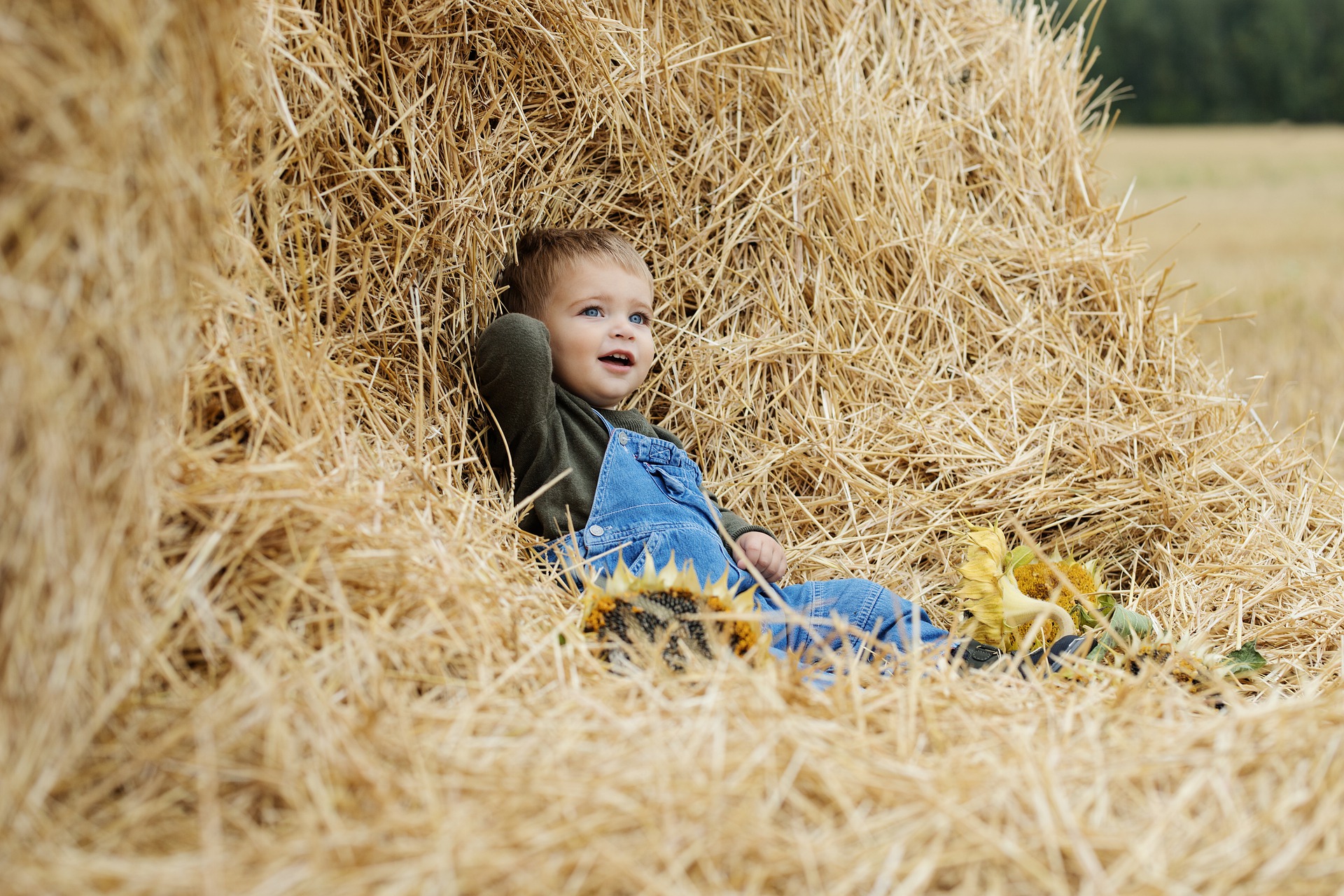Avoiding Harm on the Farm: Safety Tips for Kids

Spring in Central Illinois brings an increase in farm activities and, with it, greater risk of injuries to our kids. The hazardous nature of the agricultural environment results in many injuries and deaths to children who live, work, visit, and play on farms. Powerful machinery, tools, chemicals, confined spaces, ponds, animals, and motorized vehicles all present potential hazards. Agriculture is one of the most dangerous occupations in our country, and the only worksite in the US where children of any age may be present. Children on farms are at a higher risk than the hired workers. About every 3 days a child dies in an agriculture-related incident, and every day about 45 children are injured in the United States.
Farm Injury Statistics
Though there’s no single central repository of data for childhood agricultural injuries, the following stats, drawn from a number of sources, give some idea of the scope of the problem:
- The top 3 causes of fatal injuries: machinery, with tractors topping the list; motor vehicles, especially ATVs; and drowning.
- The top three causes of nonfatal injuries: falls; injuries from animals; and machinery/vehicles.
- Of the leading sources of fatalities among all youth, 47% involved transportation (including tractors), 20% involved contact with machinery, and 13% involved violent contact with animals and other humans.
- From 2001 to 2015, 48% of all fatal injuries to young workers occurred in agriculture. And, since 2009, youth worker fatalities in agriculture have exceeded all other industries combined!
- But, 60% of the youth injured in agriculture were not working when they were injured.
- Preschool children and older male youth are at the highest risk for fatal injury, while nonfatal injury is most common among boys aged 10-15 years.
- ATVs remain a significant source of death and injury among youth. There are more than 100 pediatric ATV-related fatalities a year, and over 30,000 ER visits.
- Nonfatal youth agricultural injuries are estimated to cost society $1.26 billion per year, and can wipe out an individual family farm’s annual profits in just days.
- It’s estimated there may actually be four times more injuries than are reported, as many agricultural injuries and illnesses aren’t captured by traditional surveillance methods.
Farm Safety Tips for Kids
Though we call them agricultural “accidents”, they often follow predictable and preventable patterns. Some tips that have been developed to reduce the dangers are mostly common sense:
- Keep kids away from tractors. Tractors cause over 40% of accidental farm deaths of children under 15. In spite of this, it’s estimated 4 out of 5 farm children regularly ride on tractors. It may be time to break that tradition.
- Consider major risk factors for ATVs. A lack of training, small kids operating adult size ATVs, riding as or carrying passengers, riding on a road, operating at night, and, of course, not wearing a helmet.
- Keep young children away from worksite hazards. Provide separate safe play areas, and strict supervision and rules when around dangerous equipment, machinery, large animals, and other hazardous environments.
- Consider constructing barriers to block children entering particularly dangerous areas. Marking all potentially hazardous areas, such as grain bins, tractors and trucks, grain wagons, etc., with decals or brightly colored markers can help in training children to know what to avoid.
- Teaching kids electrical safety. Teaching kids electrical safety and proper behavior around and respect for electricity may avoid electrocution.
- Supervise small children near water. Small children can’t be left unsupervised in or near water, including ponds, swimming pools, and stock watering tanks. Teaching kids to swim as early as possible, while at the same time emphasizing the dangers of ponds and lakes may prevent drowning accidents.
- Use care with Children and Animals. Children have to be taught how to handle and work around animals, including household pets. Children tend to love animals, but animals don’t always love children. Livestock must be kept in appropriate pens or fenced areas.
- Actively supervise young workers. When youth do work, the work has to be age appropriate and adequately supervised. Remember potentially dangerous teen characteristics – lack of experience, impulsiveness, risk taking attitudes, susceptibility to peer pressure, and the desire to prove themselves.
- Make the environment as safe as possible. Eliminate or reduce hazards like slippery/uneven surfaces, distractions, and repetitive motions. Make sure all equipment has proper safety devices installed and in working order.
- Provide proper personal protective equipment. Proper equipment may include gloves, hearing protection, helmets, nonskid shoes, etc.
- Provide training and ensure proficiency. Adults should always model safe behaviors, give job training, require practice until proficient, and supervise.
Farms can be a wonderful place to grow up, to work, and to visit, but we all have to do our part to avoid harm on the farm.



